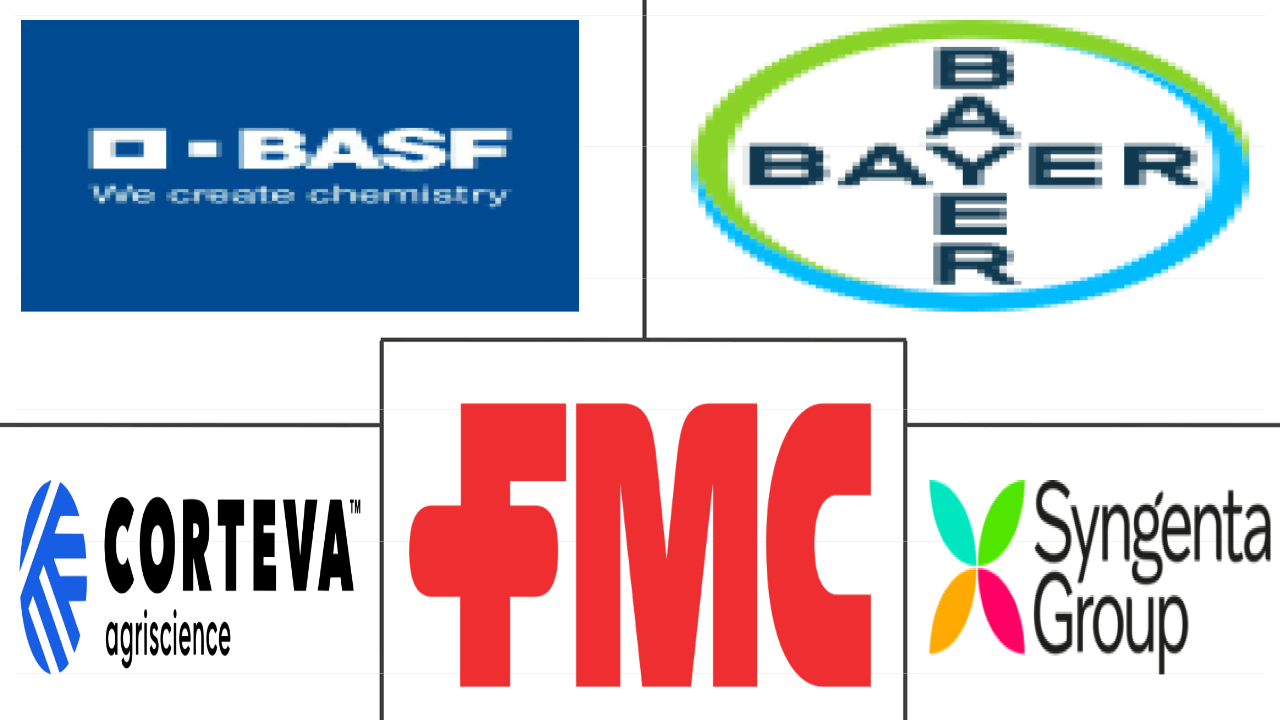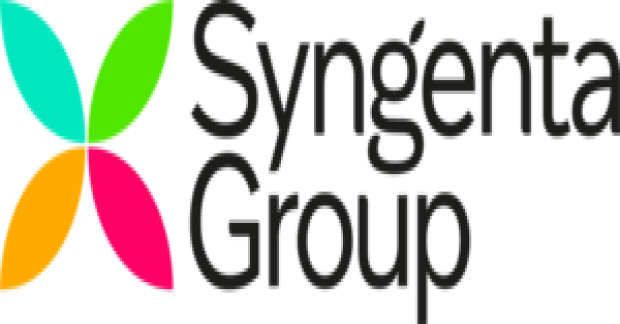Market Size of south america crop protection chemicals Industry
| Icons | Lable | Value |
|---|---|---|
|
|
Study Period | 2017 - 2029 |
|
|
Market Size (2024) | USD 42.49 Billion |
|
|
Market Size (2029) | USD 53.55 Billion |
|
|
Largest Share by Function | Herbicide |
|
|
CAGR (2024 - 2029) | 4.74 % |
|
|
Largest Share by Country | Brazil |
Major Players |
||

|
||
|
*Disclaimer: Major Players sorted in no particular order |
South America Crop Protection Chemicals Market Analysis
The South America Crop Protection Chemicals Market size is estimated at 42.49 billion USD in 2024, and is expected to reach 53.55 billion USD by 2029, growing at a CAGR of 4.74% during the forecast period (2024-2029).
42.49 Billion
Market Size in 2024 (USD)
53.55 Billion
Market Size in 2029 (USD)
4.98 %
CAGR (2017-2023)
4.74 %
CAGR (2024-2029)
Largest Segment By Function
43.14 %
value share, Herbicide, 2023
Frequent weed infestations, labor shortages, increased wages, and problems associated with manual weeding have favored the growth of the herbicide market in the region.
Fastest-growing Segment by Function
6.06 %
Projected CAGR, Molluscicide, 2024-2029
The giant African snail and golden apple snail are invasive species that pose a serious threat to a variety of crops. This is boosting the growth of the molluscicide market in the region.
Largest Segment by Crop Type
48.04 %
value share, Pulses & Oilseeds, 2023
Monoculture, no-tillage practices, and climate changes favored the growth of various pests and diseases, causing damage to the crops. This boosted the growth of the pesticide market.
Largest Segment by Country
77.72 %
value share, Brazil, 2023
Climate changes like drought and heat waves have increased the occurrence of various pests and diseases, causing severe damage to the agricultural sector. This has boosted the pesticide market in the country.
Leading Market Player
15.74 %
market share, Syngenta Group, 2022

Syngenta Group is investing more in research and development activities to extend its product offerings. It is developing innovative pesticides for addressing various crop issues.
The market for pesticides is driven by the excessive yield losses in economically important crops in the region
- Herbicides accounted for the highest share of 42.9% of the crop protection chemicals consumed in South America in 2022, with a market value of USD 16.78 billion. Weeds pose persistent challenges to crop cultivation, and the need to control weeds has emerged as a driving force behind the herbicide market to sustainably maximize crop productivity.
- Amaranthus palmeri is a prevalent weed species in soybean-producing regions of Brazil and Argentina. Studies have shown that soybean crops experience yield losses ranging from 20.28% in cases of minimal Amaranthus weed infestation to as high as 62.8% when facing severe infestations.
- Aphids, thrips, whiteflies, leafhoppers, black aphids, pod borers, and stem fly insects cause considerable damage to major pulses and oilseed crops grown in the region, leading to severe yield losses and reduced crop quality. Insecticides accounted for 39.9% of the South American crop protection chemicals market in 2022, with a market value of USD 15.61 billion in the same year.
- Fungal diseases are a major constraint in soybean production in South America, and it is estimated that between 8-10% of soybean production is lost to diseases. The main diseases that affect the foliage of soybean plants in this region are target spot, Cercospora leaf blight, and Asian soybean rust. Fungicides such asmepoxiconazole, fluxapyroxad, and azoxystrobin are highly effective against these diseases.
- Among nematodes, root-knot nematode is the most prevalent. Carrots are susceptible to considerable losses, averaging up to 20.0%, while potatoes can experience even higher losses of up to 33.0% due to infestations caused by these nematode species.
- Thus, the need to increase the yield of crops in South America is anticipated to drive the market for pesticides.
Demand for pesticides is driven by the increased pest and disease proliferation, and expansion of agricultural cultivation
- Pests, diseases, and weeds are emerging as a significant problem in the Brazilian agriculture sector. To counter these threats effectively, farmers predominantly depend on the application of pesticides, and the market was valued at USD 30.40 billion in 2022. Soybean cultivation in Brazil faces numerous pest challenges, with lepidopterans and stink bugs being the primary pests demanding special attention. Particularly, the southern armyworm is known to inflict a significant 17.0% yield loss on soybean production.
- Renowned for its expansive agricultural expanse, favorable climate, and agricultural proficiency, Argentina stands as a prominent global agricultural producer and exporter. The nation's agricultural domain prioritizes high-yield cultivation to address both domestic and global requisites. Pesticides play a pivotal part in augmenting yields through the mitigation of pest and disease-induced losses. In 2022, Argentina held the second-largest portion, accounting for 13.9% by value, within the South American crop protection chemicals market.
- Chile's diverse agricultural landscape, with a variety of crops grown throughout the country, creates a demand for a broad range of pesticides to control various pests and diseases. Additionally, the launch of innovative products with different modes of action in the market in recent years provides farmers with more choices for crop protection, contributing to the growth of the pesticide market. Chile accounted for a market share of 1.05% of the total crop protection chemicals market in 2022.
- The market is estimated to register a CAGR of 4.89% during the forecast period (2023-2029) due to factors like favorable climatic conditions for pest and disease proliferation and expansion of agriculture cultivation.
